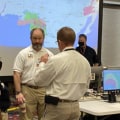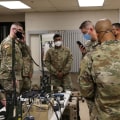The goal of the Louisiana emergency response system is to provide training and technical assistance to local education authorities (LEAs) for the development and implementation of high-quality school emergency operations. The National Preparedness System outlines a framework for organizing preparedness activities, so that they address all types of risks, emergencies or disasters and include the entire community. This is to ensure that the National Preparedness Goal is achieved, guaranteeing safety and resilience. The Department of Children and Family Services (DCFS) is responsible for managing state shelters for people with critical transportation needs, shelters for people with special medical needs, shelters for sex offenders, and shelters for unaccompanied minors, while providing staff and resources to shelters for the general population who request it. The plan includes a chain of command that establishes the authority and responsibility of several people.
The purpose of this plan is to establish clear guidelines that detail the appropriate response to disaster and crisis situations. The goal of this plan is to limit the loss of life and property in the event of an emergency or crisis that affects the operations of the University of Southern Shreveport. These procedures apply to all University staff and to properties that are owned or leased by the University of South Shreveport. In the event of an impending emergency, the Louisiana Department of Education (LDOE) will contact the designated emergency preparedness and recovery representative to remind them to complete and maintain the emergency preparedness and recovery panel. The Emergency Management Institute offers self-paced courses designed for people who have emergency management responsibilities and for the general public.
To provide training opportunities, the Louisiana Department of Health, in partnership with Well-Ahead and the Louisiana Rural Health Association, organizes an annual emergency preparedness training series in which hospitals and health centers can participate. The Transportation Technology Center International (TTCI) training approach combines classroom and laboratory training with large scale adjoining practical field exercises to prepare first responders. The REMS Technical Assistance Center website contains free resources, training, and technical assistance (TA) for schools and their community partners, including many tools and resources on emergency planning and responding to infectious disease outbreaks. The Louisiana Department of Health provides educational training on emergency preparedness to medical centers and stakeholders. The Emergency Operations Plan is consistent with established practices related to the coordination of emergency response actions.
Based on information obtained from relevant entities, the incident commander will initially declare the level of the emergency and may activate parts of the emergency operations plan to the extent necessary. The National Center for Emergency Response and Recovery Training (NERRTC) was established in 1998 as part of the National Disaster Preparedness Center (NDPC) and was approved in 2000 by the Federal Emergency Management Agency (FEMA) as a national disaster response center. The Shreveport Southern University Police Department is responsible for coordinating the preparation and ongoing updating of the Emergency Operations Plan (EOP) and its compatibility with those of federal, state and local agencies. The TTCI was designated within the NDPC as the National Center for Emergency Response in Ground Transportation. Guided by principles outlined in the National Preparedness System, enabled by the Louisiana Homeland Security and Emergency Assistance Act (Disaster Act), and managed by GOHSEP (Governor's Office of Homeland Security & Emergency Preparedness), citizens are prepared to respond to and recover from emergency events or disasters. In addition, UPD (University Police Department) will train personnel on emergency notifications to individuals or departments that help carry out the Emergency Operations Plan.
The primary responsibility for monitoring threats or emergency events lies with UPD. The University Incident Commander will review circumstances with Emergency Operations Group to determine appropriate response.






